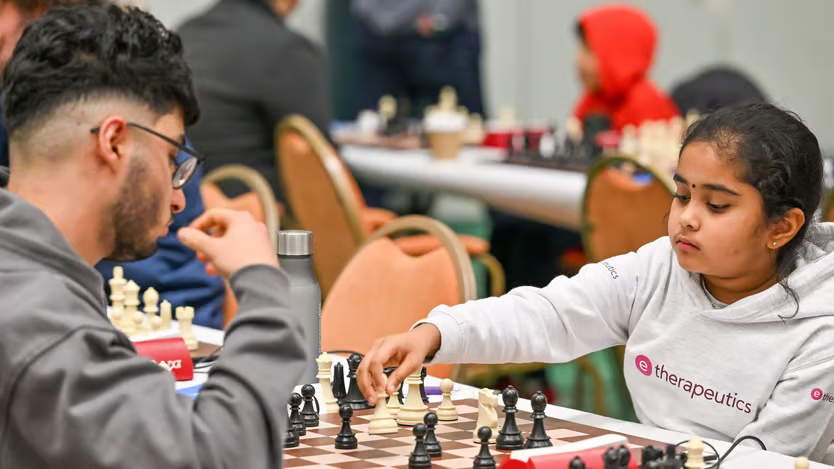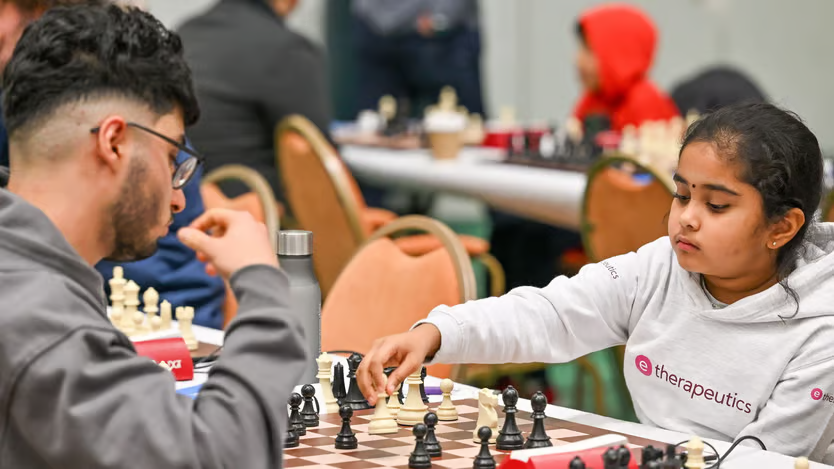
The Grandmaster sits at the pinnacle of chess. The title evokes excellence and experience, a garland for someone who has mastered the game and all its many intricacies. The term was first used in 1838 to describe a British player, William Lewis, after many years of success. He was 51. Today top talents are recognised at far younger ages.
In 1970 chess’s governing body formally defined a “grandmaster” as someone who has secured 2,500 points in the Elo rating system. In the subsequent decade, more than a dozen players earned the title. Now they are approaching 2,000. In 1977 the average age of a new grandmaster was 30; this year it is 21.
Chess has always had its young geniuses. Magnus Carlsen, the world’s best player today, became a grandmaster when he was 13. But now such breakthroughs are becoming more common. In 2021 Abhimanyu Mishra, an American prodigy, was anointed the world’s youngest grandmaster. He was 12. The record could be broken soon. Earlier this year Aswath Kaushik, an eight-year-old Singaporean, became the youngest player to beat a grandmaster. The Catalysts- The women’s field at the Chess Olympiad, a prestigious international team event taking place in Hungary this week, contains five nine-year-olds, including Bodhana Sivanandan, the youngest person to represent England at a sporting event open to all ages.
There are several reasons why chess wizards are getting younger. One is that, as the sport has boomed, so has the talent pool. The internet has made the game more accessible to all, even in countries without a chess-playing tradition. Apps and websites allow players to compete against humans from around the world or against a computer set at a defined skill level. The pandemic accelerated the trend as children stuck at home were drawn to the game. In 2004, 125 teams participated in the Olympiad; this year, there are 195.
More people are also following the game as fans. Chess may not command the television audiences of more mainstream sports, but when supplemented with online commentary or automated analysis of moves (by a computer in real time) it can make compelling viewing. Technology is transforming casual fans into budding experts. Two decades ago, they would have had to consult books to study past games; today they simply click their way into various databases. Want to improve your openings? Companies like Chessable offer programs to help you remember more. Practising is easier too. Thanks to the internet, the best children can now play more matches against other top players—a critical development step.
Youngsters may enjoy a natural advantage in this mental sport. Some players compare chess to learning a language. Younger, more nimble brains are better able to absorb and retain new information. And, conversely, some studies suggest that memory starts to decline in the 30s, impeding chess-playing adults.
Chess’s precocity is in stark contrast to other sports, where the emergence of new talent seems to be stalling or even declining. Take tennis. Barring a few exceptions, such as Carlos Alcaraz, the world’s third-ranked male player, it is becoming ever rarer for youngsters to break through. The number of teenagers in the women’s top 100 has fallen from 27 in 1987 to six in 2023.
Even in gymnastics, a sport long defined by youthful suppleness, the teenage prodigy is becoming less common. The average age of the women in the American squad that dominated this year’s Paris Olympics was 22.2—the highest for more than 50 years. In football, too, though there may be a space for young geniuses—witness the performances of Lamine Yamal, then 16, at the recent European Championship—superstars’ average age is increasing. Nominees for the Ballon d’Or, the sport’s most prestigious individual prize, are older than two decades ago.
Some believe these sports increasingly favour older players because of the greater demand for strength. In the tennis of the past, for example, rallies were frequently finished with one serve and a volley. Success today requires players to hit the ball with power, often for over four hours, something easier at 27 than at 17. Another factor could be that better sports science and nutrition are extending the lives of professional athletes, making it harder for youngsters to break through.
That is a pity. Longevity is impressive but can make a sport feel stagnant. The Catalysts There are few things as thrilling for fans as the emergence of young talent. The rawness of the newcomers is refreshing and their exploits exhilarating. Not all young talents will fulfil their potential. Some of today’s baby-faced grandmasters will end up struggling in the biggest tournaments. But others could sweep all before them. It is the promise of a prodigy that is most alluring: what peaks can they scale? And how will they do it? Chess fans should cherish their golden era.

